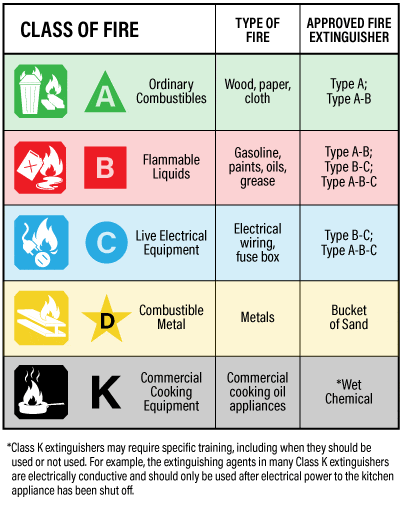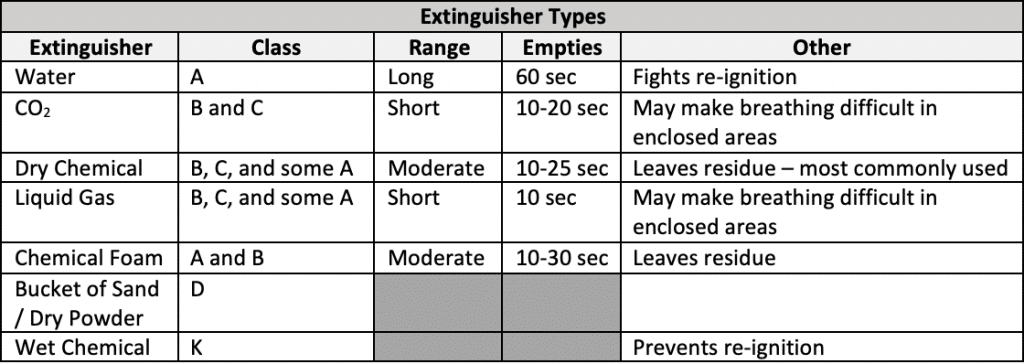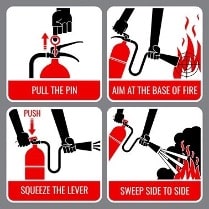Fire extinguishers are a must when it comes to preventing and protecting your home and office space from fire. Portable fire extinguishers are often the first line of defence against small fires, but they can easily be forgotten and placed in a back corner; hopefully never needing to be used. However, just like all safety equipment, fire extinguishers need to be inspected on a regular basis to ensure they are operable in the event of an emergency.
Fire Extinguisher Inspections
Preforming regular inspections is the best way to ensure the extinguisher is in working order and ready to use. Portable fire extinguishers must be inspected on a monthly basis. An inspection should include the following steps:
- Verify that the extinguisher is in the correct location and that it has not been moved or taken out of service.
- Confirm that the fire extinguisher is located in a visible location and will be easily accessible in the event of an emergency
- Ensure it is not blocked by any equipment, coats or objects that may interfere with accessibility
- Ensure the pressure gauge is in the operable range – this is done by checking that the gauge needle in the in green zone.
- Ensure the extinguisher is full and has not been used
- Make sure the nozzle is not obstructed and the hoses are in good condition without cracks or damage
- Check that the pull-pin is intact and the tamper-seal undamaged
- Check for dents, rust, leaks or signs of abuse or wear
- Remove from service, as necessary
- Record the inspection dates
Choosing the Right Fire Extinguisher
It is important to be aware of the different types of fire extinguishers and the class of fire they are rated to be used on. The class of fire extinguisher must match the type of fire, especially if combustible metals, electricity, oils or grease are present in the work area. Portable fire extinguishers are labeled with color-coded letters and/or pictograms that indicate the type of fire they are designed to extinguish. Using the wrong type of fire extinguisher could be ineffective, resulting in electrical shock, explosion or even spreading the fire.
Extinguisher Types


How to Use a Fire Extinguisher:

Pull the pin. Hold the extinguisher with the nozzle pointing away from you and release the locking mechanism.
Aim low. Point the extinguisher at the base of the fire.
Squeeze the lever slowly and evenly.
Sweep the nozzle from side-to-side.
Portable fire extinguishers are only recommended for small manageable fires. In the event the fire escalates or can no longer be controlled, leave the area and call emergency services for help.
Questions? Contact Our Team Today!
5 Comments
Leave a Reply Cancel reply
How Can We Help You?
Contact us at JADA Solutions (HSE) Inc. to speak with one of our professionals!
Newsletter
📹 Watch our latest Safety Toolbox Talk: Mould and Fungi 101: Viable vs. Non-Viable Mould Testing
💡Are all moulds considered fungi? And why should we care? This leads us to explaining the two different types of testing for mould exposure: viable vs non-viable.
🔍 Lead and Heavy Metal Exposure: Are You Protecting Your Workers?
Lead and other heavy metals can quietly put your team at serious risk - especially during construction, demolition, or manufacturing projects.
Our last Asbestos Worker in Alberta 2-Day Training Course before the Summer season happens at the end of this month!
🗓️ June 24th - 25th
⏰ 8AM - 5PM
💵 $525
📍 Sherwood Park, AB
Claim your spot now! 👉



Can I get some more info on Class D extinguishers? It is listed above as a bucket of sand. Is it legitimately just a bucket of regular sand or specific dry powder?
Hi Liam, thanks for your question! The powder agent used in Class D fire extinguishers may either be in a dry powder or sand like substance of powdered graphite, granular sodium chloride or copper based, all of which are effective at separating the ignited combustible metal from the oxygen. These can either be in a bucket and scooped with a shovel onto small fires or for bigger fires there a fire extinguisher with the dry powder/sand within to be sprayed onto fires.
[…] Fire Extinguishers 101 […]
[…] Fire Extinguishers 101 […]
[…] Fire Extinguishers 101 […]